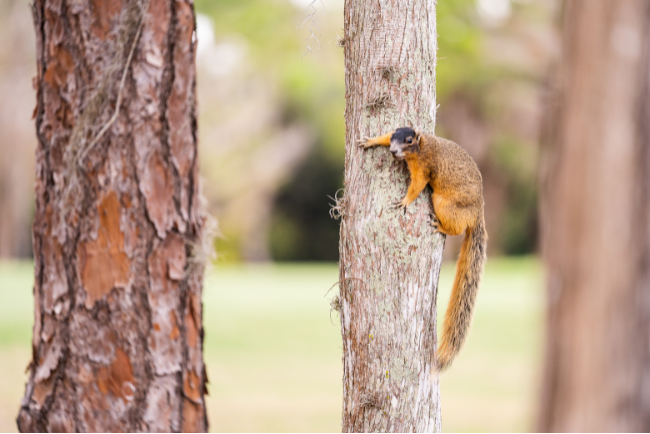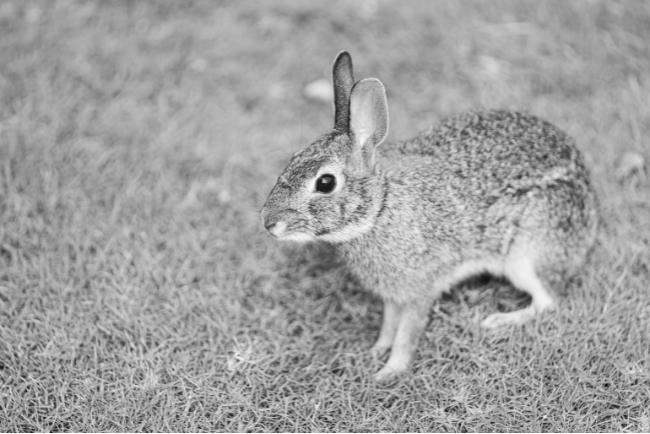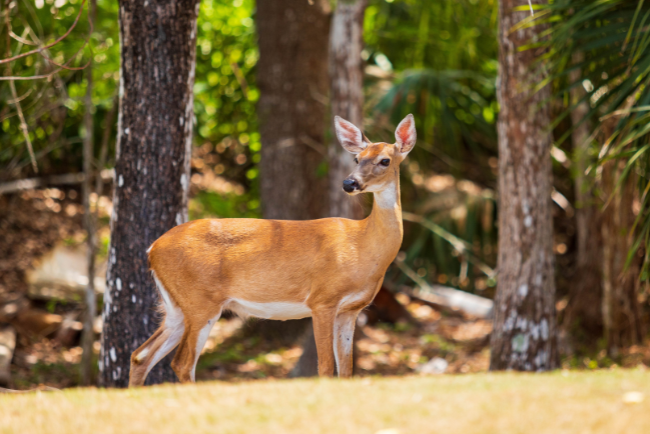Keeping Things Wild
Welcome back to another Wildlife Wednesday!
In the last post, things were looking up as we learned about the birds that can be seen around The Club at Olde Cypress campus. Now we're coming back down to earth (even taking a dip) as we explore some fascinating facts about our land-dwelling and water-loving fauna. Special thanks to Brad Haynes for sharing his intel on these interesting species!
Bobcat
These cats are not named after their Uncle Bob but instead thanks to their short tails that look like they've been "bobbed." [1] Another fun fact that makes them a natural fit at Olde Cypress is that "Bobcat tracks are the size of a golf ball"! [2]
Brad says: About five years ago, we had a bobcat mother and her three cubs at our #1 tee (the stacked rocks there made a great den) and you could see the kittens playing every morning! Recently, we've spotted them here near the #6 tee because the hole abuts the preserve. We usually see them early in the morning or in the late afternoon.

Fox Squirrel
As you may have guessed, this large squirrel was named for its resemblance to a small fox. You might notice its unique way of running on the ground which lends to this appearance. [3]
Brad says: These squirrels were reintroduced in the 1990s and since then, have become a common spotting on golf courses in Naples. They are larger than gray squirrels, can have a variety of fur colors (orange, blonde/yellow, brown, and black) and have big fluffy tails just like a fox. Cute as they are, please remember not to feed them!

Rabbit
You're probably familiar with cottontail rabbits and their distinctive white "powder puff" tail. Florida is also home to the marsh rabbit (smaller, darker brown, coarser hair) which often walks rather than hops! [4]
Brad says: Both kinds of rabbits have large populations in Florida and are common on our course.
Armadillo
Did you know? "When [armadillos] need to cross narrow water bodies, they often walk on the bottom underwater. If it is a wide body of water, they will inflate their stomach to twice its normal size, allowing for enough buoyancy to swim across." [5]
Brad says: We don't have too many armadillos at Olde Cypress. They are not our favorite friends because they love to dig holes on the green. They also eat crickets which we appreciate so, of course, we leave them be.
Raccoon
Raccoons are considered "amongst the most intelligent of Florida's wildlife" in part because they will change their routines based on when and where food is available. [6]
Brad says: We have our share and they are a resourceful bunch! They do help us because they eat Apple Snails, most of which are invasive species that are not native to Florida.

White-Tailed Deer
As their name implies, these deer can be recognized by their tails. "When deer are alarmed, the tails are held erect and waved back and forth like a white flag, signaling a warning to other deer." [7]
Brad says: The buck we have been recently observing is a 10-point buck (which means four upright tines on each side of its antlers with two upright brow tines on its forehead). There were several sightings of the buck in August this year, which is a time that South Florida deer go into rut (breeding). Other times of year, they have more nocturnal behavior. Throughout the year, we often spot several does, usually in the peaceful hours of early morning or late afternoon.
River Otter
These members of the weasel family are as adept on land as they are in the water. [8] You might be surprised to know that "otters have five toes and [their] heel pad tends to be somewhat horseshoe shaped." [9]
Brad says: Last summer was Florida's driest wet season in history and the hottest season in South Florida. Likely due to this, we didn't see any otters last year. Luckily, we're ahead in rainfall this year so we expect to see them soon! While they're fun to watch, please keep your distance as they can be aggressive.